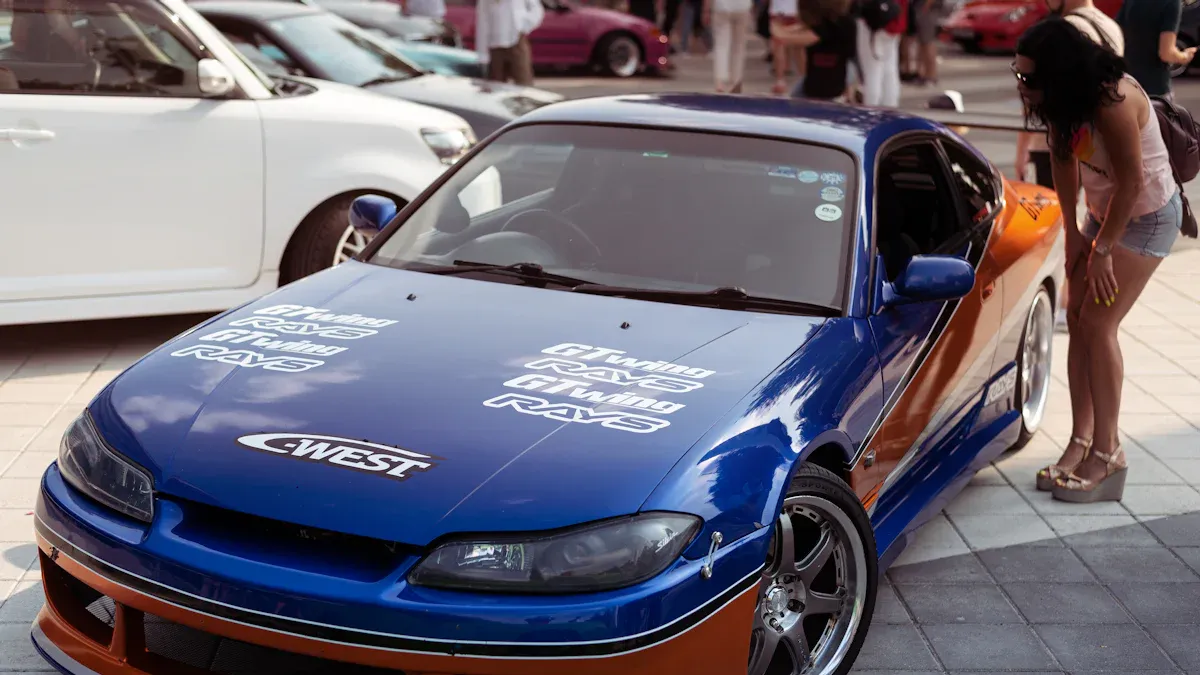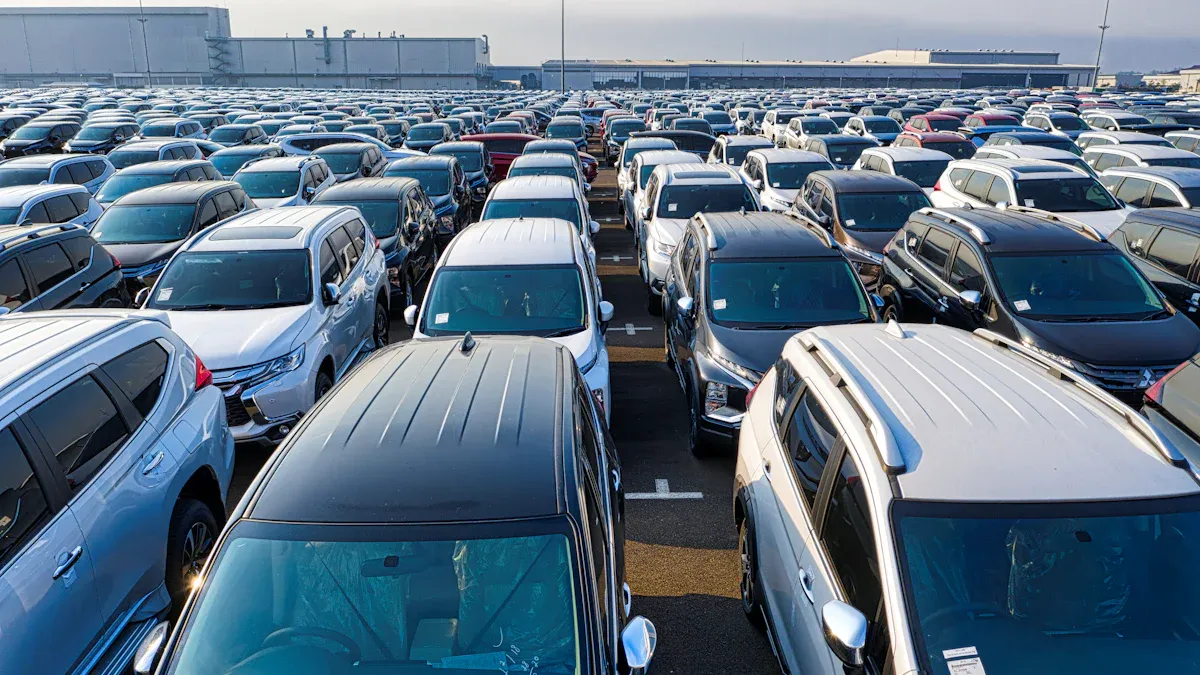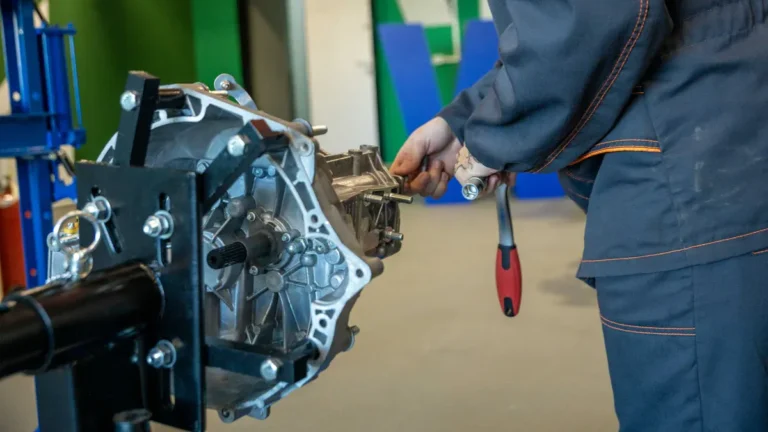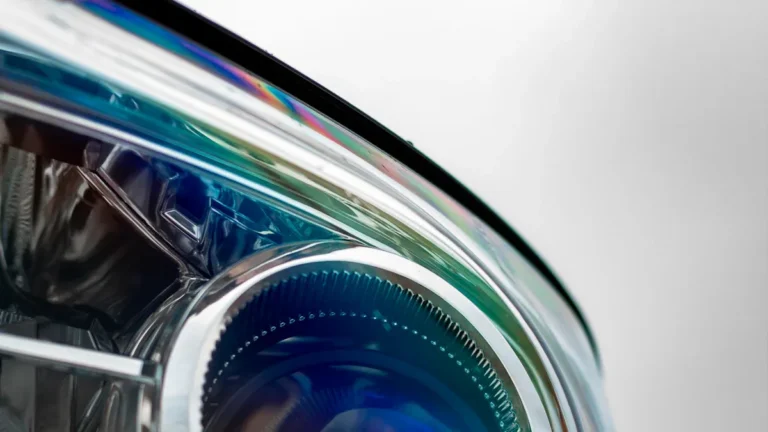
Japan’s automotive market consistently drives global innovation. Its unique consumer preferences shape a dynamic landscape. This post unveils the anticipated Top Selling Models and most popular cars in Japan for 2025. The market blends rich tradition with cutting-edge technology. Fuel efficiency, compact design, advanced safety features, and environmental considerations define vehicle popularity. We explore the cars shaping Japan’s roads in the near future.
Key Takeaways
Japanese car buyers like small cars. These cars fit on narrow roads. They also save gas.
Hybrid cars are very popular in Japan. They use less fuel. This helps the environment.
Kei cars are a special type of small car in Japan. They have low taxes. They are good for city driving.
Japan wants more electric cars. The government gives money to help people buy them. They also want more charging stations.
Japan’s Automotive Market Trends 2025

Key Consumer Preferences
Japanese car buyers show distinct preferences. They favor smaller vehicles. Japan’s narrow roads make large vehicles, like U.S. pick-up trucks, less practical. Consumers also strongly prefer right-hand drive cars. Fuel efficiency is another major factor. A wide network of dealer stores is crucial. This allows consumers to easily experience cars firsthand. Buyers are also attracted to unique models. These models offer an adventurous appeal, fitting between domestic and premium options. Japanese consumers prefer hybrid vehicles over fully electric ones. Limited supply chain investments and energy security concerns contribute to this focus. They prioritize hydrogen technology over full electrification. Local automotive companies face challenges in the EV market. They struggle to accurately target consumer preferences.
Factors Driving Popularity
Several factors drive car popularity in Japan. The need for compact design is paramount due to urban environments. Fuel efficiency remains a top priority for many buyers. This explains the strong demand for hybrid models. Advanced safety features are also essential. Consumers seek vehicles that offer protection and peace of mind. Environmental considerations play a significant role.
This pushes manufacturers towards cleaner technologies. Practicality and versatility are important. Cars that adapt to various family needs and urban driving conditions gain favor. These elements combine to define the Top Selling Models in the market.
Data Sources and Methodology
Reliable data sources inform market analysis. The Japan Automobile Manufacturers Association (JAMA) collects and distributes Japanese auto industry data. JAMA provides statistics, trends, and regulatory information. This includes Japan’s auto sales, exports, and production figures. JAMA tracks annual trends for Japanese-branded motor vehicles.
Statista also offers detailed market reports on passenger cars in Japan. Their reports cover revenue, price, and user demographics. Statista uses a bottom-up modeling approach. This relies on company reports, websites, vehicle registries, and car dealers. They also use environmental agencies and country-specific associations. Key market indicators, such as GDP and car stock per capita, help estimate market sizes. Forecasts use diverse techniques, including the ARIMA model. GDP per capita and consumer spending per capita are main drivers for these forecasts.
Honda N-Box: Leading Kei Car Sales
The Honda N-Box consistently holds a top position in Japan’s automotive market. It maintains a 4.8% market share as of August 2025, showing a 2.6% year-over-year increase. This makes it the leading kei car in Japan. The N-Box also demonstrated strong sales figures, with 16,394 units sold in January 2025. It surpassed 10,000 sales in August 2025. This model dominates the kei car segment.
Design and Practicality
The 2023 Honda N-Box features a clean, box-like silhouette. This design maximizes interior volume. It also maintains a friendly, approachable look. The standard model includes rounded LED headlights with a ‘human eye’ shape. A body-colored grille gives it a calm presence. Higher trims offer a bolder front end with a three-dimensional gloss-black grille.
They also have sleeker LED light strips and sportier bumper treatments. Its vertical proportions, high roofline, and flat body sides are intentional design choices. Dual power sliding doors make the cabin feel open and accessible. Large glass areas enhance visibility. The interior design is clean and thoughtful. It features quality finishes and well-integrated controls.
The N-Box offers an exceptional sense of space and comfort. This comes from its tall profile, long wheelbase, and optimized layout. It provides ample headroom, a flat floor, and generous legroom for four adults. Dual sliding rear doors allow effortless entry and exit. This is especially useful in tight parking spaces or with children. Honda’s clever “Ultra Seat” system and low step-in height enhance accessibility. The boot space is about 141 liters with all seats upright. It expands to approximately 725 liters when rear seats fold flat.
Performance and Efficiency
The Honda N-Box offers efficient performance suitable for urban driving. It comes with a 658 cc S07A I3 engine or a 658 cc S07B I3 engine. Turbocharged versions are also available. The naturally aspirated engine produces 43 kW (58 PS). The turbo engine delivers 47 kW (64 PS). All versions use a Continuously Variable Transmission (CVT). The N-Box is known for being fuel-efficient and light on consumables.
Technology and Safety
The Honda N-Box integrates the Honda SENSING advanced safety and driver-assistive system as standard across all models. This system uses a front wide-view camera and eight sonar sensors. These sensors are at the front and rear of the vehicle. They enhance safety and provide peace of mind. It includes new functions like Low Speed Brake Function and Unintended Acceleration Mitigation. It assists drivers in various situations, including city and expressway driving. It manages acceleration, deceleration, and steering.
For the first time in a Honda mini-vehicle, the Multi-View Camera System (MVCS) is available on some N-Box models. This system helps drivers in challenging situations. These include entering intersections with poor visibility, navigating narrow roads, and backing into parking spaces.
Reasons for Enduring Popularity
The Honda N-Box remains a favorite among Japanese consumers. Its practical design, spacious interior, and fuel efficiency appeal to many. The advanced safety features provide peace of mind. Its dominance in the kei car segment highlights its success. It consistently ranks among the Top Selling Models due to its blend of functionality and modern technology.
Toyota Roomy: Regular Car Leader
The Toyota Roomy established itself as the true leader in regular cars during July 2025. This compact MPV showed a 1.5% increase in sales. It also secured a third-place ranking among Top Selling Models in June 2025. The Roomy consistently attracts buyers with its practical design and versatile features.
Compact MPV Design
The Toyota Roomy features a distinctive compact MPV design. Its exterior combines a tall, boxy silhouette with modern styling cues. This design maximizes interior volume while maintaining a small footprint. The front fascia often includes a prominent grille and sleek headlights, giving it a contemporary look. Its compact dimensions make it ideal for navigating Japan’s urban environments and narrow streets.
Interior Space and Versatility
Inside, the Toyota Roomy offers surprising space and versatility. Its high roofline provides generous headroom for all occupants. The cabin layout is highly flexible. Rear seats can slide, recline, or fold flat. This creates various configurations for passengers and cargo. Families appreciate the easy access provided by its wide-opening doors. The flat floor also enhances comfort and movement within the cabin.
Urban Driving Dynamics
The Toyota Roomy excels in urban driving conditions. Its compact size and tight turning radius make it highly maneuverable. Drivers find it easy to park in crowded city spaces. The engine provides sufficient power for city commutes and light highway travel. Its smooth transmission contributes to a comfortable driving experience. The Roomy offers a stable and predictable ride, which adds to driver confidence.
Appeal to Japanese Families
Japanese families find the Toyota Roomy highly appealing. Its combination of compact size and spacious interior meets their diverse needs. The versatile seating arrangements accommodate both passengers and luggage for daily errands or weekend trips. Its fuel efficiency helps reduce running costs. The Roomy provides a practical, reliable, and comfortable solution for family transportation.
Toyota Yaris/Cross: Crossover Success
The Toyota Yaris/Cross demonstrates significant crossover success. It outsold the Toyota Corolla/Cross in July 2025. This model also achieved a significant 19.7% increase in sales. Its strong performance makes it one of the Top Selling Models in the Japanese market.
Modern Aesthetics
The Toyota Yaris/Cross features a modern and dynamic design. Its exterior combines the agility of a compact car with the robust stance of an SUV. Sharp lines and sculpted body panels give it a contemporary look. The front fascia often includes a distinctive grille and sleek LED headlights. This design appeals to urban drivers and those seeking a stylish vehicle.
Hybrid Powertrain Options
The Yaris Cross offers efficient hybrid powertrain options. These systems combine a gasoline engine with electric motors. This setup provides excellent fuel economy and reduced emissions.
Hybrid Trim | Drivetrain |
|---|---|
HYBRID X | FWD, E-Four |
HYBRID G | FWD, E-Four |
HYBRID Z | FWD, E-Four |
The Toyota Yaris Cross uses a 1.5L 3-cylinder engine with a hybrid option. This powertrain delivers a combined horsepower of approximately 114-120 hp. Drivers experience smooth acceleration and responsive performance.
Advanced Features
Toyota equips the Yaris/Cross with advanced features. It includes a comprehensive suite of safety technologies. These systems assist drivers and help prevent accidents. The infotainment system offers connectivity options. Drivers can access navigation and entertainment easily. Modern conveniences enhance the overall driving experience.
Market Impact and Growth
The Yaris/Cross has made a strong impact on the Japanese market. Its sales growth reflects its popularity among consumers. The model’s blend of style, efficiency, and practicality resonates with buyers. It continues to capture a significant share in the competitive crossover segment.
Toyota Raize: Rising Compact SUV
The Toyota Raize quickly climbed the ranks. It moved to second place among Top Selling Models in June 2025, just behind the Toyota Yaris/Cross. This compact SUV offers a compelling package for Japanese drivers.
Bold Exterior Design
The Toyota Raize features a bold, distinctive design. It combines the powerful style of an SUV with the form factor of a small passenger car. A robust and smart front end includes angular bumper corners and a trapezoid lower grille. This creates a powerful, wide appearance. Muscular wheel arches contribute to an assertive stance. Sleek LED headlights and sequential turn lights reflect advanced technologies. The side profile presents a solid SUV silhouette with a low profile for a sporty, agile look. The striking rear mirrors the front’s angular bumper corners for a wide and planted stance. Buyers can choose from seven exciting exterior hues and several bi-tone variants. It also offers 16-inch or 17-inch alloy wheels.
Compact SUV Performance
The Raize delivers efficient performance suitable for urban and suburban driving. Its compact size makes it easy to maneuver through city streets and tight parking spaces. The engine provides enough power for daily commutes and light highway travel. Drivers experience a smooth and responsive ride.
Practicality and Value
The Raize’s interior offers comfort and convenience. It features high-quality details like plating and red accents. The instrument panel provides an outstanding field of view. Operational elements face the driver. A conveniently positioned gear lever and steering wheel switches offer intuitive control. An illuminated center console adds practicality.
The seats feature long, wide cushions with supportive side bolsters for optimal comfort. The cabin includes an 8-inch multimedia screen with Apple CarPlay® & Android Auto, a USB port, a four-speaker sound system, and powerful air conditioning. It also has 60/40 split and foldable rear seats. Toyota’s ISOFIX safety system secures baby seats. The brand-new Raize’s compact body contains a spacious luggage compartment. It has a wide opening and dimensions of 1,000 mm in width, 865 mm in height, and 755mm in length. A movable deck board adjusts for numerous convenient storage solutions. With the deck board in its low position, the vehicle boasts a class-leading luggage capacity of 369 liters.
Consumer Appeal
The Toyota Raize appeals to a wide range of consumers. It offers impressive fuel efficiency. The gasoline model achieves 20.7 km/L (48.8 mpg). The hybrid trim reaches an outstanding 28.0 km/L (66.1 mpg). This makes it one of the best in the small SUV category.
The Raize also challenges the perception of expensive new cars with its affordable price. It achieves this by eliminating unnecessary features and focusing on essential functions. This affordability makes it a popular choice in Japan as a first car for families of four and for young professionals. It appeals to all ages and genders. Consumers can experience the appeal of an SUV without the hefty price tag. The Raize prioritizes rationality and practicality. It also includes important safety features:
Collision avoidance assist
Lane departure warning
Curtain airbags
LED headlights
As Toyota’s entry-level crossover, the Raize fills an important gap. It provides buyers the elevated ride height and cargo practicality of a small SUV. It does this without the big vehicle price tag. This makes it an attractive option for those seeking SUV benefits at a more accessible price point.
Honda Freed: Versatile Minivan Performer
The Honda Freed earned its place among Japan’s Top Selling Models, securing a fifth-place ranking in June 2025. This versatile minivan consistently appeals to families and urban drivers. It offers a blend of practicality, efficiency, and comfort.
Flexible Seating Configurations
The Honda Freed provides impressive flexibility with its seating arrangements. Families can choose different layouts to suit their needs.
Configuration | Seating Details |
|---|---|
Seven-passenger | Captain’s seats in the second row offer comfort; a walk-through layout allows easy access to all rows. |
Eight-passenger | A 60:40-split tumble seat in the second row forms a bench, accommodating three adults; this capacity is unique in its class. |
Five-passenger | Two rows of seating provide ample cargo space due to a low- and flat-floor design. |
Third Row | 50:50-split seats easily flip up to expand cargo space. |
Second-row seating offers impressive flexibility. It includes sliding, reclining, and fold-flat options. The third row is designed primarily for children or occasional adult use. It folds flat into the floor to expand cargo capacity.
Fuel-Efficient Options
The Honda Freed offers fuel-efficient powertrain options. These options help reduce running costs for owners. It typically features a 1.5-liter i-VTEC engine. Hybrid versions are also available. These hybrid models combine a gasoline engine with an electric motor. This setup provides excellent fuel economy, making it an economical choice for daily driving.
Safety and Comfort
Honda equips the Freed with advanced safety features. These systems protect occupants and assist drivers. Standard safety technologies often include multiple airbags and stability control. The cabin design prioritizes comfort for all passengers. High-quality materials and thoughtful ergonomics contribute to a pleasant travel experience.
Family-Friendly Features
The Honda Freed excels as a family-friendly vehicle. Its flexible seating and spacious interior accommodate various family sizes and activities. Dual power sliding doors make entry and exit easy, especially for children or in tight parking spaces. Ample storage compartments throughout the cabin help keep the interior organized. The Freed’s practical design and reliable performance make it a popular choice for Japanese families.
Nissan Sylphy: Top Selling Model in June
The Nissan Sylphy achieved significant success in June 2025. It became the top-selling model for that month. This sedan sold a remarkable number of units.
Model | Monthly sales |
|---|---|
Sylphy | 21,024 |
This performance highlights its strong appeal in the Japanese market. The Sylphy stood out among many popular vehicles.
Sedan Design and Comfort
The Nissan Sylphy features a sleek sedan design. Its exterior lines are modern and elegant. This design gives the car a sophisticated look. Inside, the Sylphy prioritizes passenger comfort. The cabin offers ample space for all occupants. Seats are supportive, making long drives pleasant. High-quality materials are used throughout the interior. This creates a refined atmosphere for drivers and passengers.
Driving Dynamics
The Sylphy provides a smooth and stable driving experience. It handles well in urban environments and on highways. The suspension system absorbs road imperfections effectively. This ensures a comfortable ride. Drivers find the steering responsive and easy to manage. The car offers good acceleration for daily commuting. Its quiet cabin also enhances the driving pleasure.
Technology Integration
Nissan equips the Sylphy with advanced technology. These features enhance convenience and safety. The car uses an innovative e-POWER system.
e-POWER System Components: This system includes a 1.2L engine, a generator, an inverter, a battery pack, and an electric motor.
e-POWER Functionality: The engine generates electricity for the battery. The electric motor then drives the vehicle. This allows for 100% electric propulsion.
Driving Experience: Drivers experience rapid acceleration and smooth performance. The car is quiet. It also supports single-pedal driving, like pure electric vehicles.
Infotainment: A 12.3-inch infotainment screen features Nissan Connect 2.0+.
Convenience Features: The Sylphy includes keyless entry/start, a panoramic camera, and wireless charging.
Driver Assistance: ProPILOT assist helps drivers on the road.
The Sylphy is built on the same platform as the Nissan LEAF. It inherits core technologies from that model. It also offers remote audio and video control via mobile phone.
Market Position
The Nissan Sylphy’s strong sales in June 2025 solidified its market position. It proved its popularity among Japanese consumers. Its blend of design, comfort, and advanced technology makes it a competitive choice. The Sylphy continues to be a significant player in the sedan segment. It remains one of the Top Selling Models in Japan.
Toyota RAV4: Strong SUV Contender
The Toyota RAV4 proved its strength in the SUV market. It sold 19,735 units in June 2025. This made it a top-selling SUV among Japanese brands that month. The RAV4 consistently attracts buyers with its robust design and reliable performance.
Robust Design
The Toyota RAV4 features a bold and rugged design. Its exterior projects a strong, adventurous image. Sharp lines and muscular fenders give it a distinctive presence on the road. The front grille is prominent, and the headlights are sleek. This design combines modern aesthetics with off-road capability. It appeals to drivers who seek both style and function.
Performance and Capability
The RAV4 offers capable performance for various driving conditions. Its engines provide sufficient power for daily commutes and longer journeys. Drivers experience a smooth and controlled ride. The available all-wheel-drive system enhances traction and stability. This makes the RAV4 suitable for diverse terrains and weather. It delivers a confident driving experience.
Hybrid Options
Toyota offers the RAV4 with efficient hybrid options. These systems provide excellent fuel economy and reduced emissions.
The RAV4 offers both Hybrid EV and Plug-in Hybrid EV options.
For the 2025 model year, the RAV4 Plug-in Hybrid is available in SE and XSE grades.
For the 2026 model year, the RAV4 will offer a new Plug-in Hybrid system with four grades: Woodland, GR SPORT, SE, and XSE.
The 2026 RAV4 will also debut Toyota’s fifth-generation Hybrid system.
These choices allow buyers to select the powertrain that best fits their needs.
Global and Local Popularity
The Toyota RAV4 enjoys significant popularity both in Japan and worldwide. Its blend of reliability, safety features, and versatile performance makes it a global favorite. In Japan, its strong sales figures confirm its status as one of the Top Selling Models. Consumers appreciate its practicality for families and its capability for adventure. The RAV4 continues to be a strong contender in the competitive SUV segment.
Suzuki Spacia: Kei Car Segment Leader
The Suzuki Spacia surpassed 10,000 sales in August 2025. It consistently performs as a top contender in the kei car segment. This model emphasizes its position as a top performer in the kei car segment.
Unique Kei Car Features
The Spacia is classified as a kei car. It features a 5-door microvan body style. Power sliding doors enhance accessibility. Suzuki designed it for improved fuel efficiency. It is lighter than its predecessor. The Spacia also offers a larger cabin. Its tall, boxy silhouette maximizes interior space. Sliding rear doors offer excellent access in tight parking situations. The Spacia provides versatile cargo space with foldable and rearrangeable seats. It is built on a lightweight platform. This platform optimizes urban maneuverability.
Interior Innovation
The Spacia Gear variant offers a unique face. It has round LED headlights, vertical grille slits, and skid plates. Its interior features nature-inspired colors. Water-repellent fabrics and a durable cargo space cover are also present. Optional heated steering wheel and extra USB ports are available in the Spacia Gear. Accessories for the Spacia Gear include special decals, a roof rack, a retractable awning, a pet carrier, mosquito nets, and cushions. These cushions convert the interior into a double bed for camping.
Efficiency and Maneuverability
The Spacia uses a 0.66L 3-cylinder naturally aspirated engine. This engine produces 51 hp and 63 Nm torque. A mild-hybrid system enhances fuel efficiency and torque support. A turbocharged variant is available in Custom models. It provides enhanced power. The Spacia comes with front-wheel drive (FWD) and all-wheel drive (AWD) options. A CVT transmission ensures smooth power delivery.
Urban Mobility Solution
The Suzuki Spacia offers an ideal urban mobility solution. Its compact size and efficient design make it perfect for city driving. The flexible interior adapts to various needs, from daily commutes to weekend adventures. Its blend of practicality, fuel economy, and innovative features makes it a popular choice. It remains one of Japan’s Top Selling Models.
Daihatsu Move: Significant Sales Growth
The Daihatsu Move demonstrated remarkable market performance. It achieved a significant sales increase of 145% year-over-year in August 2025. This impressive growth also saw the Move surpass 10,000 sales units in August 2025. This resurgence highlights its continued relevance in Japan’s competitive automotive landscape.
Kei Car Evolution
The Daihatsu Move represents a key part of kei car evolution. Kei cars are a unique Japanese vehicle category. They adhere to strict size and engine displacement regulations. The Move has consistently adapted to consumer needs within these constraints. It offers practical and efficient urban transportation. Its long history shows how kei cars have become more sophisticated and feature-rich over time.
Design and Functionality
Daihatsu designs the Move with practicality and urban living in mind. Its compact exterior allows for easy maneuverability on narrow streets. The tall, boxy silhouette maximizes interior space. This design provides ample headroom and a surprisingly spacious cabin. Inside, the Move offers flexible seating arrangements. Rear seats can slide or fold, creating versatile cargo options. Thoughtful storage compartments enhance its functionality for daily use.
Performance and Economy
The Daihatsu Move delivers efficient performance. It typically features a small-displacement engine, common for kei cars. This engine provides sufficient power for city driving. It also ensures excellent fuel economy. Many models include mild-hybrid technology. This further boosts efficiency and reduces emissions. The Move offers a smooth and comfortable ride, making it suitable for daily commutes. Its low running costs appeal to budget-conscious buyers.
Market Resurgence
The Daihatsu Move’s recent sales figures confirm its strong market position. Its 145% sales increase in August 2025 shows renewed consumer interest. Surpassing 10,000 units sold in a single month is a significant achievement for a kei car. This performance solidifies its place among Japan’s Top Selling Models. The Move continues to attract buyers who value its blend of practicality, economy, and compact design.
Key Takeaways from Japan’s Top Selling Models

Dominance of Compacts and Kei Cars
Japan’s automotive market clearly shows a preference for compact and kei cars. Honda’s N-BOX consistently leads as the top-selling kei model. It exceeds 100,000 units annually and maintains market leadership for 11 consecutive years. Suzuki holds the largest share in overall mini-vehicle sales, reaching 34.6% in August 2025.
Daihatsu’s Move and Tanto models experienced significant growth after production recovery. Consumers prefer these vehicles due to their compactness, lower taxes, and suitability for urban environments. New models like the Nissan Roox attract tech-savvy buyers, boosting the segment’s appeal. Kei cars constituted 33.4% of all passenger car sales in the first half of 2025. Their market share has remained stable, fluctuating between 32% and 36% over the past six years. This indicates a well-established demand within Japan’s automotive market.
Hybrid and EV Transition
Japan actively pursues a transition towards electrified vehicles. The government aims for 100% electrification of new passenger car sales by 2030. This includes HEVs, PHEVs, FCVs, and BEVs. By 2035, all new passenger car sales will be 100% electrified.
The country targets carbon neutrality by 2050, reducing greenhouse gas emissions by 80% from 2013 levels. Japan implements a Green Growth Strategy. This includes subsidies and tax incentives for EV purchases and charging infrastructure. It also promotes a hydrogen strategy and invests in battery development. Challenges exist, such as limited EV charging infrastructure and higher EV costs. However, strong government support and advanced technology present significant opportunities for this transition.



